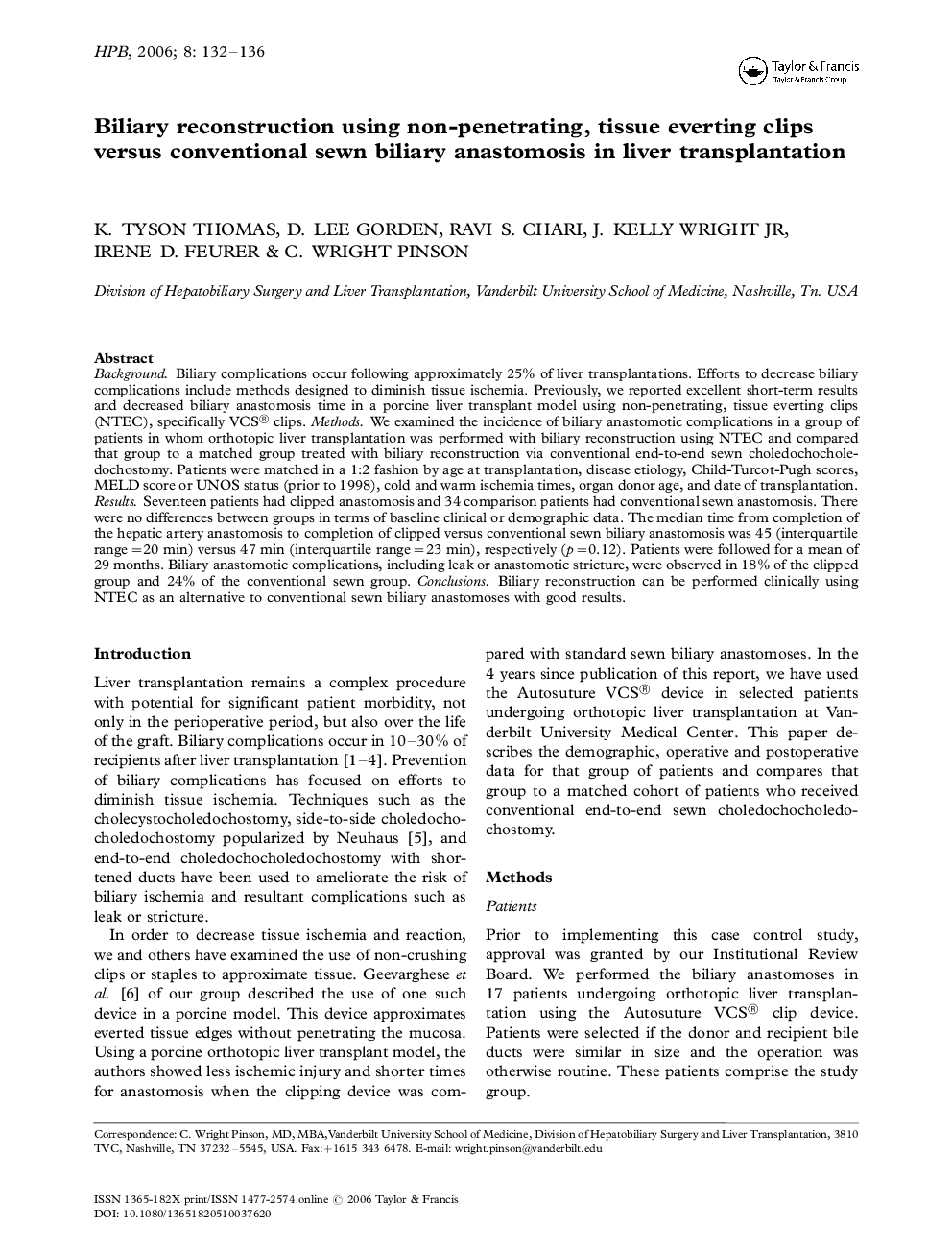| Article ID | Journal | Published Year | Pages | File Type |
|---|---|---|---|---|
| 3270024 | HPB | 2006 | 5 Pages |
Abstract
Background. Biliary complications occur following approximately 25% of liver transplantations. Efforts to decrease biliary complications include methods designed to diminish tissue ischemia. Previously, we reported excellent shortâterm results and decreased biliary anastomosis time in a porcine liver transplant model using nonâpenetrating, tissue everting clips (NTEC), specifically VCS® clips. Methods. We examined the incidence of biliary anastomotic complications in a group of patients in whom orthotopic liver transplantation was performed with biliary reconstruction using NTEC and compared that group to a matched group treated with biliary reconstruction via conventional endâtoâend sewn choledochocholedochostomy. Patients were matched in a 1:2 fashion by age at transplantation, disease etiology, ChildâTurcotâPugh scores, MELD score or UNOS status (prior to 1998), cold and warm ischemia times, organ donor age, and date of transplantation. Results. Seventeen patients had clipped anastomosis and 34 comparison patients had conventional sewn anastomosis. There were no differences between groups in terms of baseline clinical or demographic data. The median time from completion of the hepatic artery anastomosis to completion of clipped versus conventional sewn biliary anastomosis was 45 (interquartile range = 20Â min) versus 47Â min (interquartile range = 23Â min), respectively (p=0.12). Patients were followed for a mean of 29 months. Biliary anastomotic complications, including leak or anastomotic stricture, were observed in 18% of the clipped group and 24% of the conventional sewn group. Conclusions. Biliary reconstruction can be performed clinically using NTEC as an alternative to conventional sewn biliary anastomoses with good results.
Related Topics
Health Sciences
Medicine and Dentistry
Endocrinology, Diabetes and Metabolism
Authors
K. Tyson Thomas, D. Lee Gorden, Ravi S. Chari, J. Kelly Jr, Irene D. Feurer, C. Wright MBA, MD,
